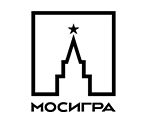
|
Интервью с куратором Елизавета Землянова Художник, куратор, декан факультета дизайна и фотографии ИГУМО (Институт Гуманитарного Образования). Закончила МГАХИ имени В. И. Сурикова, стажировалась Universität der Künste Berlin по специальности Fine Arts, закончила Бизнес-школу RMA, специальность «Арт-менеджмент и галерейный бизнес».
Главный куратор фестиваля DOCA, сокуратор выставочного проекта «Советский модернизм. Откуда: и Куда:», сокуратор международного выставочного проекта более «Чёрный чем квадратный», Россия, Бельгия, -Что такое DOCA? DOCA это международный фестиваль современного искусства. Он проходит каждый год в конце апреле, объединяя известных и начинающих художников в одном пространстве. -В чем особенность фестиваля? Особенность фестиваля в выставочном пространстве, им становится здание нашего института. Из-за учебного процесса нет возможности готовить проект год и многие проекты создаются специально на те два дня, что идет фестиваль. И у нас равные условия для всех, демократичный подход- мы выставляем на одной площадке признанных и начинающих авторов. Для молодых художников — это серьезная поддержка, дающая уверенность в своих силах. Для профессиональных художников это некий upgrade. Важно, что фестиваль международный. Признание международного сообщества — это подтверждение профессионального подхода организации фестиваля, актуальности художественной концепции и соответствие принципам современной межкультурной коммуникации. Для меня как для куратора- художника это, прежде всего возможность диалога с другими художниками и создание диалога между их искусством и зрителем. Современное искусство, для меня - это практика художественного производства. -Как устроено пространство DOCA? Работа с «негалерейным» пространством типична для нашего времени, но это обычно промышленные объекты. У нас особая специфика-наше «невыставочное» пространство это аудитории и коридоры, которые в обычное время используются по своему прямому назначению. Фестиваль как бы «переоткрывает» место, особенно для тех, кто здесь находится ежедневно. Контекст пространства влияет на те проекты, которые уже выставлялись до этого в галереях и музеях, и они получают здесь новую трактовку. Нам важно создать комфортное пространство для встречи зрителей с современным искусством. Для это мы специально готовим к фестивалю около 100 гидов-модераторов, готовых помочь гостям, ответить на их вопросы, рассказать о проектах. -Как изменился фестиваль за 10 лет? Фестиваль постоянно меняется. Когда система стабильна - она умерла. Творчество — это всегда процесс и изменение. За 10 лет из выставки одного дня, проект DOCA превратился в международный фестиваль современного искусства. -Как вы находите художников и как происходит отбор работ? Художники становятся участниками двумя путями: через open call, который мы объявляем каждый год, а также приглашенные художники, работающие с теми же темами, которые мы исследуем. По мере создания экспозиции, мы понимаем встраивается ли художник в общую концепцию. Как вы стали куратором? Я всегда оценивала не только само произведение, но и то, как оно представлено зрителю. Неправильным экспонированием, представлением можно изменить контекст проекта. Задача куратора максимально полно представить высказывание художника, используя все возможные средства. Мне всегда интересно анализировать как выстраивается режиссура выставок. Кураторов часто путают с организаторами выставки, но работа куратора гораздо сложнее, он действует внутри системы глобальному творческого мира, это постоянная работа над собой, «прокачивание» многих компетенций, саморазвитие, чтение книг, просмотр фильмов, путешествия, посещение выставок. Как рождается тема фестиваля? На что вы ориентируетесь? Я ориентируюсь на творческую интуицию, на знания и на опыт, который идет как раз из всего перечисленного выше. Тема фестиваля всегда «Современность». Фестиваль - площадка для критического осмысления повседневности через коллективное художественное высказывание. Художественное произведение создаётся художниками, но в произведение искусства его повращает зритель. Моя задача, как куратора попытаться создать все условия необходимые для диалога между художником и зрителем. |
Interview with Curator Elizaveta Zemlyanova Artist, curator, Dean of Faculty of Design and Photography at the Institute for the Humanities and Information Technologies (IGUMO). Elizaveta Zemlyanova graduated from the Moscow State Academic Art Institute named after V.I. Surikov. She underwent an internship at the Universität der Künste Berlin in the Fine Arts field of training. She also graduated from the RMA Business School majoring in Art Management and Gallery Business. Chief curator of the Days of Contemporary Art (DOCA) festival, co-curator of the ‘Soviet Modernism. From: and To:’ exhibition project, co-curator of the Deeper Black than Square international exhibition project, Russia, Belgium, co-curator of the ‘n+1: Habitation Formula’ exhibition project, Germany, etc. – What is DOCA? – DOCA is an international festival of contemporary art. It takes place every year at the end of April and brings together famous and beginning artists in one space. – What is the unique feature of the festival? – The peculiarity of the festival lies in the fact that the building of our institute becomes an exhibition space. Because of the continuous academic process, there is no opportunity to prepare a project for a year. Many projects are created specifically for the two days of the festival. We have equal conditions for everyone, a democratic approach: we exhibit the works of established and beginning artists in the same space. For young artists, this is serious support. This gives them confidence in their abilities. For professional artists, it is a kind of upgrade. It is important to mention that the festival is international. The recognition of the international community is a confirmation of the professional approach of the festival’s organisation, the relevance of its artistic concept, and its compliance with the principles of contemporary intercultural communication. For me, as a curator and artist, it is, in the first turn, an opportunity for dialogue with other artists and the establishment of a dialogue between their art and the audience. For me, contemporary art is the practice of artistic production. – How is the DOCA space organised? – Working with ‘non-gallery’ spaces is typical for our time. However, that usually presupposes using industrial objects as artistic venues. We have a special feature: our ‘non-exhibition space’ is the classrooms and corridors, which are normally used for their direct purpose. A festival is like ‘rediscovering’ a place, especially for those who visit our institute on a daily basis. The context of the space influences those projects that have already been exhibited in galleries and museums before: they get a new interpretation here. It is important for us to create a comfortable space for acquainting our visitors with contemporary art. That is why we train about 100 guides-moderators for the festival. They are ready to help our guests, answer their questions, and tell them about the projects. – How has the festival changed in 10 years? – The festival is constantly changing. When the system is stable, it’s dead. Creativity is always a process and change. In ten years, DOCA has evolved from a one-day exhibition into an international festival of contemporary art. – How do you find artists and how are the works selected? – There are two ways how artists can become participants of DOCA. They can join us through an Open Call that we announce every year. Those can always be guest artists working with the same topics that we explore. In the process of creating an exposition, we understand whether the artist fits into the overall concept. – How did you become a curator? – I have always evaluated not only the work itself but also the way how it is presented to the viewer. One can change the context of a project by exhibiting or presenting it in the wrong way. A curator’s task is to present the artist’s message as fully as possible, using all possible means. I am always interested in analysing how exhibitions are arranged. Curators are often confused with exhibition organisers. In fact, a curator’s work is much more complicated: he or she works inside the system of the global creative world. It presupposes a constant work on yourself, upgrading many competences, self-development, reading books, watching films, travelling, and visiting exhibitions. – How is the topic of the festival born? What guides you? I am guided by creative intuition, knowledge, and experience coming from the above-mentioned things. Modernity is always the topic of the festival. The festival is a platform for critical reflection on everyday life through collective artistic expression. A project is created by artists. However, it is actually the viewer who turns it into a piece of art. My task, as a curator, is to try to create all the conditions necessary for a dialogue between the artist and the viewer. Translated by Nikolay Gavrilov |

























